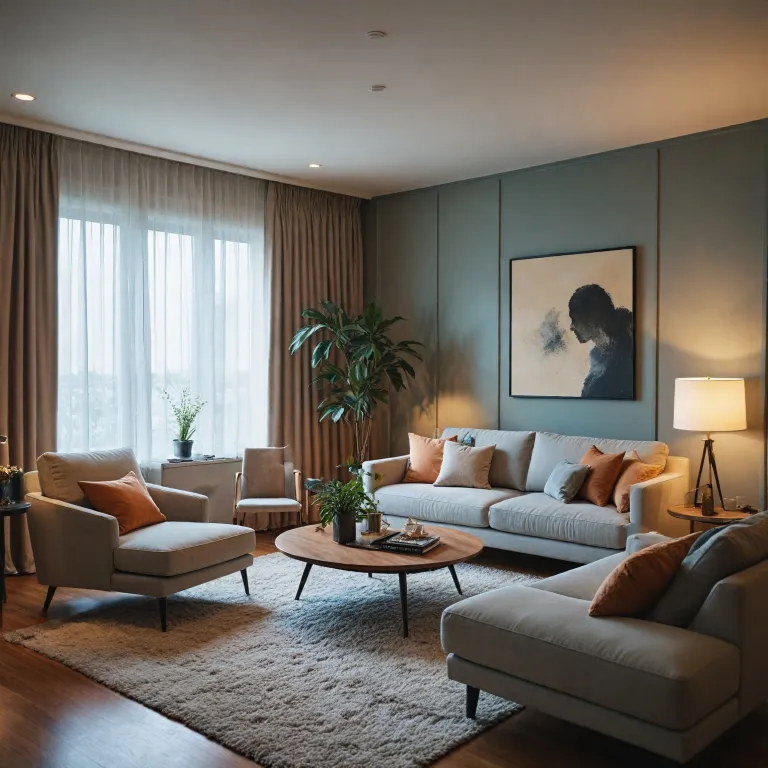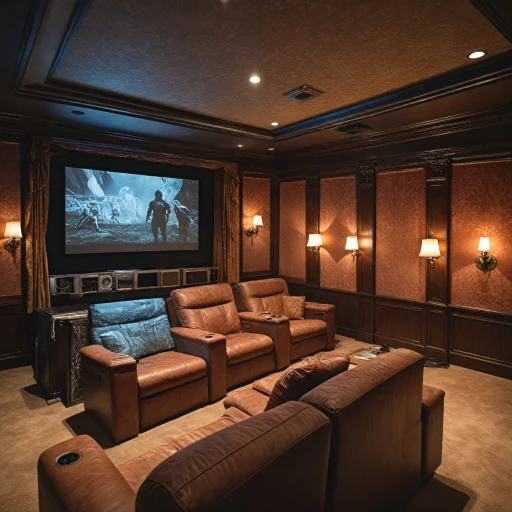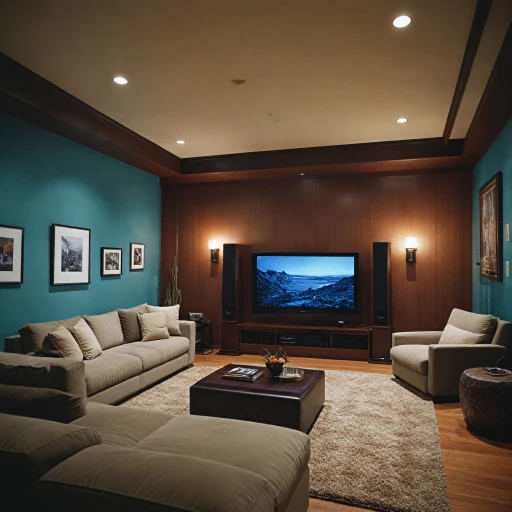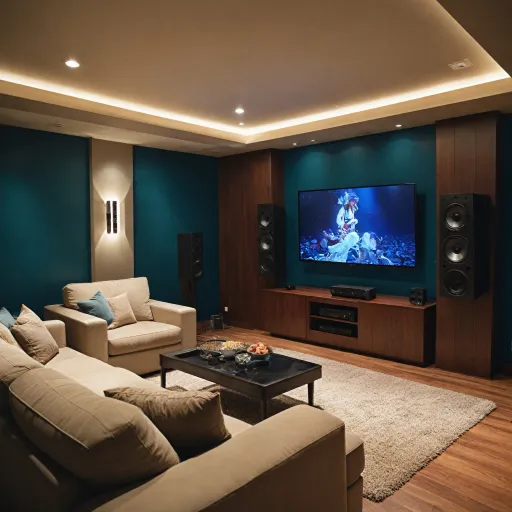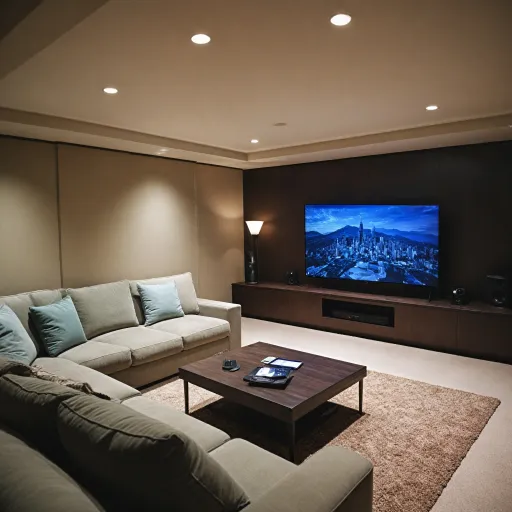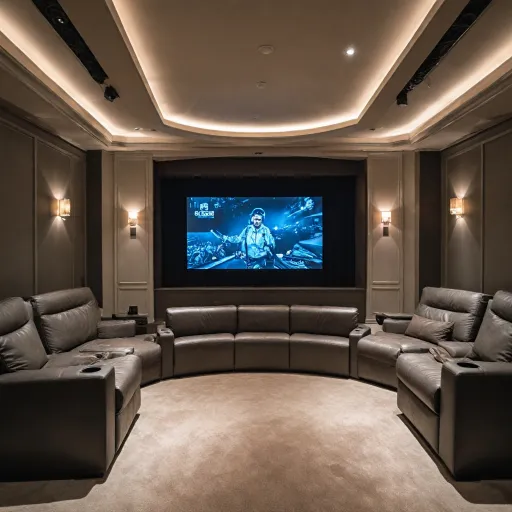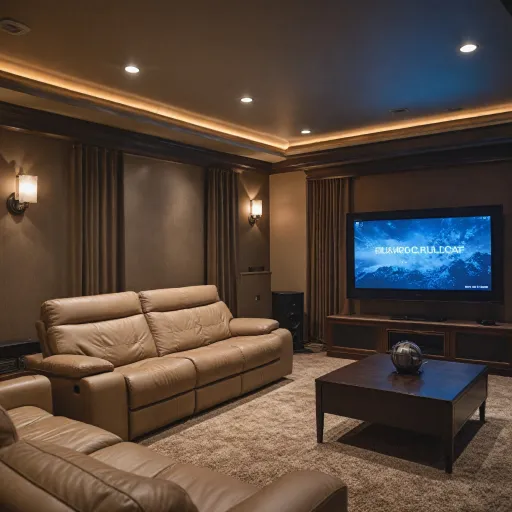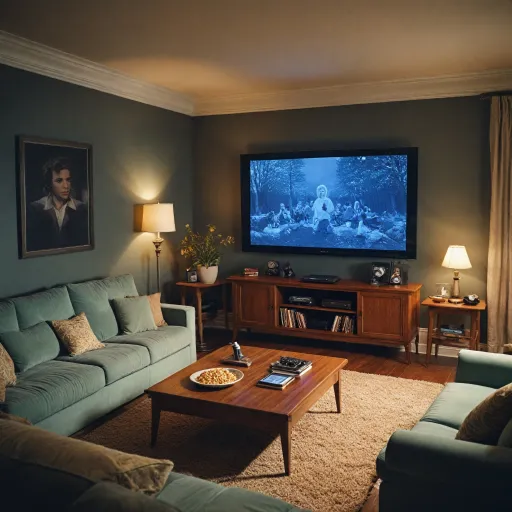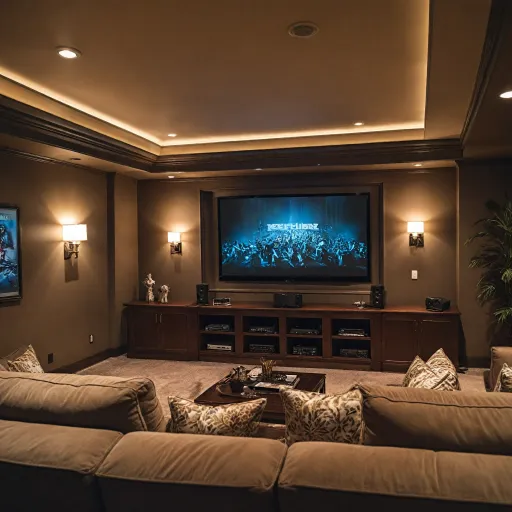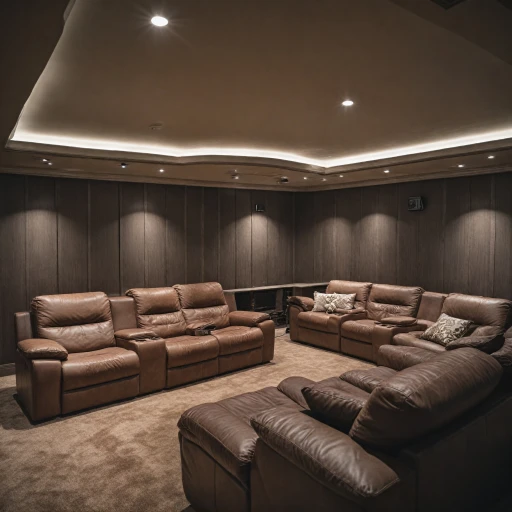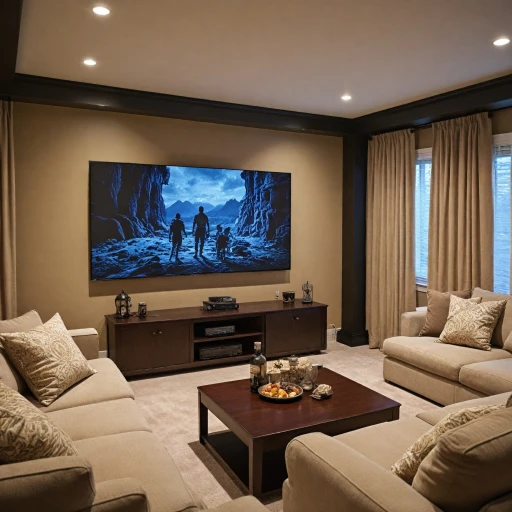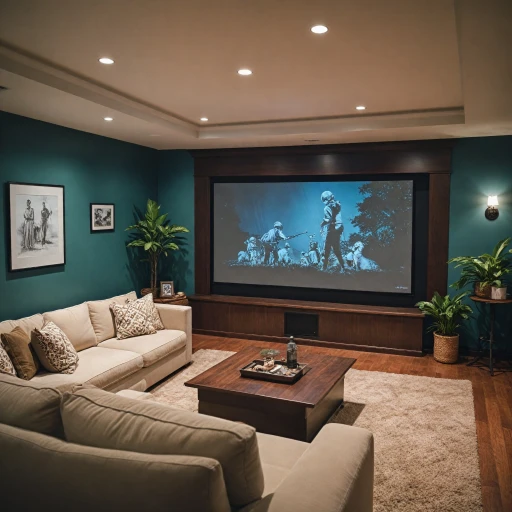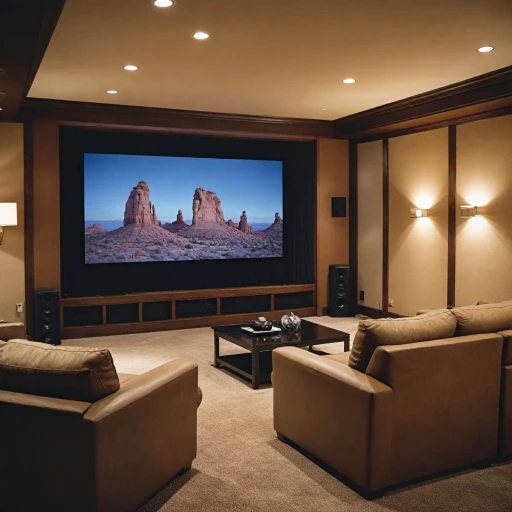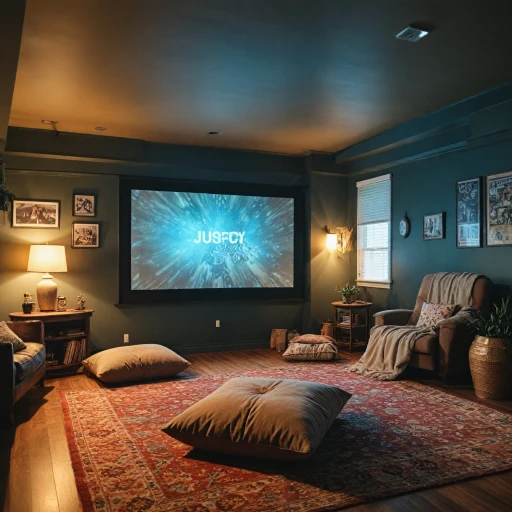
Understanding the Role of Loudspeaker Stands
The Importance of High-Quality Loudspeaker Stands
When setting up a home audio system, it’s tempting to focus solely on the speakers themselves. However, understanding the role of loudspeaker stands can make a significant difference in the overall audio experience. Properly chosen and positioned stands not only support your speakers but enhance their performance.
Loudspeaker stands are more than just a physical support; they help in isolating the speakers from vibrations that can muddy the sound. A robust steel speaker stand, for example, can minimize undesirable resonances, providing a clearer, more precise sound. Choosing the right product for your audio setup ensures you’re not missing out on the full capabilities of your speakers.
Consider the material and design of the stands. Do you prefer a sleek black finish, a minimalist white setup, or perhaps a steel product with a top plate that blends into your home decor? Each type has distinct advantages and can affect the aesthetic of your room. Additionally, the base and height adjustment features are crucial—these determine how your speakers distribute sound and interact with the room’s acoustics.
Investing in quality speaker stands can turn a good audio system into a great one, making it a worthy consideration for any audio enthusiast.
Choosing the Right Loudspeaker Stands for Your Space
Factors to Consider for Your Ideal Speaker Stands
Selecting the right loudspeaker stands involves more than merely fitting aesthetics; it demands attention to several crucial aspects to enhance your audio experience. Here's a guide to assist you in making an informed decision.- Material and Construction: The material of the stands, such as steel or wood, impacts the overall sound quality and stability. Steel stands often provide a sturdy and stable base, ensuring the speakers remain vibrations-free. Consider the type of material that aligns with your home decor and offers durability.
- Height and Adjustability: The height of the stand plays a significant role in the dispersion of sound throughout the room. Height adjustable stands allow you to customize the setup to suit your space and listening position. Look for stands that offer flexibility in height adjustment to attain the perfect angle for optimal sound delivery.
- Compatibility with Your Speakers: Ensure the stands you choose are compatible with your speaker type. Whether you have compact studio monitors or larger floor-standing speakers, the top plate and mounting capabilities must securely hold your speakers without risking balance or safety issues. Consider speaker stands specifically designed for your monitor speaker or floor speaker type for an optimal setup.
- Base and Stability: The base of the speaker stands is crucial for maintaining balance and minimizing vibrations. Options range from wide, stable bases to stands with rubber pads or spikes for enhanced floor grip. Selecting the right base ensures that the stands remain firm, even at higher volume levels.
- Aesthetic and Integration: While functionality is paramount, the stands should aesthetically blend with your home theater decor. Whether it’s sleek black or elegant white, choose a design that complements your room's overall design. Adding a pair of well-designed stands can seamlessly integrate your audio setup into the existing environment.
Positioning Loudspeaker Stands for Optimal Sound
Perfect Placement for Pristine Audio
Positioning loudspeaker stands correctly is crucial for achieving the best sound quality in your home theater setup. A well-thought-out placement enhances the audio experience, ensuring every note is clear and impactful. Start by considering the height of your speaker stands. Height adjustable stands allow you to customize the setup to match your specific listening environment. For studio monitors, positioning them at ear level when you are seated is ideal. This setup helps create a direct audio path, allowing the sound waves to hit your ears directly. Experiment with the distance between your seating area and the speakers themselves. If the stands pair with a home theater system, positioning them a few feet away from the floor and walls can help reduce sound reflections that often muddy the audio quality. Floor speakers on sturdy steel bases provide a stable foundation, while wall mounts or a monitor table allows for further flexibility in smaller spaces. Creating an equilateral triangle between you and the speakers stand position can offer a balanced sound stage. The top of the speakers should not be cluttered with other objects to maintain a clear audio projection path. For those seeking additional guidance on enhancing your overall home audio experience, consider exploring the perfect subwoofer and amplifier combination to complement your speaker setup. By paying attention to placement, you can transform your ordinary listening experience into an extraordinary one, where each sound detail is unveiled with clarity and precision. Whether you're using black steel speaker stands or a white table stand, proper positioning ensures your speakers perform at their peak, delivering exceptional audio quality.Integrating Loudspeaker Stands with Your Home Decor
Seamlessly Blending Loudspeaker Stands with Your Home Decor
Finding the right balance between aesthetics and functionality can be a rewarding challenge when it comes to integrating speaker stands into your home environment. Achieving a perfect blend ensures that your stands not only support your audio equipment effectively but also complement the interior design of your home theater. For those who prioritize elegance and sleekness, consider opting for stands in classic colors like black or white, which can suit various decor styles. Black speaker stands lend sophistication, while white can add a touch of brightness, fittingly adapting to modern and classic interiors alike. When choosing the material of your stands, consider steel for its durability and sleek appearance. Steel products, whether it’s a steel speaker stand or a entire stands pair, are known for their robustness and their ability to hold heavier monitor speakers securely. A steel speaker base can also add a refined industrial edge to your setup, aligning with both minimalist and contemporary decors. Moreover, focus on the form and placement of your speakers. For example, a stand square or a floor speaker stand can neatly tuck into corners, utilizing space without overwhelming your room layout. Stands allow for flexibility, enabling you to position your speakers for optimal sound coverage while maintaining the visual appeal of your space. Height adjustable options are also invaluable in achieving the ideal placement without compromising on look. The ability to modify the height of your monitor speakers ensures that the sound is directed perfectly at ear level, enhancing the audio experience while still keeping your personal style intact. Finally, consider the top and base of your stands. A solid plate for mounting offers stability for your monitor table or flexible studio setups. Whether you’re setting up a casual listening area or a comprehensive home theater system, the incorporation of well-chosen speaker stands can elevate both the acoustic performance and aesthetic quality of your space. In essence, the right stands can seamlessly and stylishly integrate with your home decor, catering to both function and form.Maintenance and Care for Loudspeaker Stands
Ensure Longevity and Performance
Proper maintenance and care of your speaker stands are crucial in ensuring they provide the best audio experience for years to come. Given that stands come in various materials, such as steel, wood, or plastic, it's essential to understand how to care for each type correctly. First, regular cleaning is fundamental. Dust and dirt can accumulate on the stand's surface and may affect its stability and appearance. Use a soft cloth to wipe the stands, being gentle to avoid scratching the finish. For steel products and black metal finishes, occasionally using a damp cloth can help remove smudges, but ensure the stands are completely dry afterward to prevent rusting.Maintain Stability
Over time, stands, especially those that are height adjustable, may experience loosening of their components. Check and tighten any screws or bolts regularly to maintain the stability of the base and height adjustment mechanisms. This is vital whether you're utilizing a floor speaker configuration or a monitor table setup. If your stands allow for floor spikes or additional weight on the base, ensure these are set correctly to prevent wobbling. These features are especially important in environments with studio monitors, where precision audio is critical.Avoid Common Placement Hazards
Avoid placing stands in areas where they might be easily knocked over or where cords could create a tripping hazard, potentially damaging your speakers. Consider using more stable options like a wall mount or a table stand if space is limited. Finally, remember that even the most robust steel speaker stand requires attention. Regular checks and care will ensure that your speakers remain securely mounted and that your audio setup continues to deliver the pristine sound quality you expect. Always read the manufacturer's instructions for specific product care recommendations, as these can vary significantly between the different types of stands available on the market.Common Mistakes to Avoid with Loudspeaker Stands
Avoiding Common Errors for a Seamless Audio Experience
In your pursuit of an impeccable audio experience, speaker stands can be both your ally and adversary if common mistakes aren't sidestepped. Let’s delve into the key pitfalls and how to avoid them:- Inappropriate Material Selection: Choosing stands made of subpar materials can compromise sound quality. Opt for steel stands that offer durability and stability for your speakers.
- Incorrect Height Adjustment: Height is crucial in determining the clarity of audio. Ensure that your stand's height allowance is suitable for your space and listening position. Height adjustable stands can offer much-needed flexibility.
- Poor Positioning: Position your stands where they enhance sound projection without causing distortion. Do not corner them; instead, allow stands to be placed at an optimal distance from walls.
- Ignoring Aesthetic Integration: While the speaker’s performance is primary, aesthetics play a role. Choose stands that complement the decor, available in finishes such as black or white, to blend seamlessly with your room’s style.
- Neglecting Maintenance: Regular care is necessary. Clean your speaker stands frequently to prevent dust accumulation which can affect joint function and stability.
- Improper Base Securement: Ensure that the base of your stand is strong, with an anti-slip design, to avert toppling of studio monitors.
